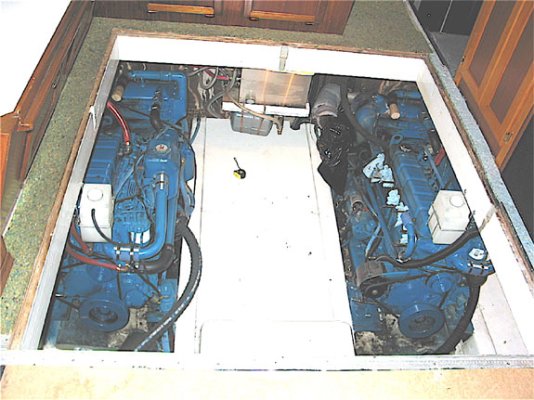Capt.Bill11
Guru
There is a good article in an old PMM.
A 34' Mainship w twin engines and a single shaft (as I recall) was the subject of the project. Diesel electric bus components were used. Worked very well. But probably wasn't very economical to purchase and install. The project was aimed at re-powering.
Must have been some significant downside as I've not heard of it since.
It was the other way around. One engine and two shafts.
Think about it, shafts and gearboxes are cheaper than engines and one engine uses less fuel that two.





